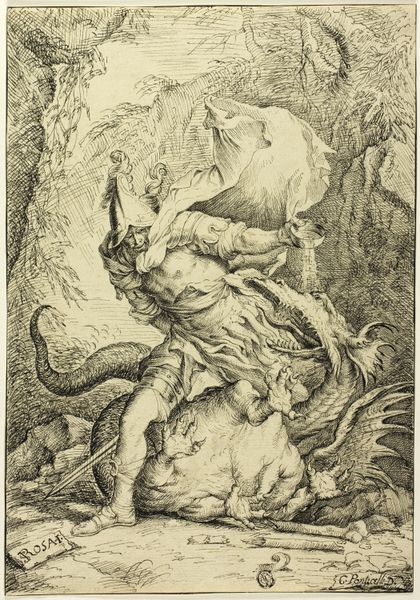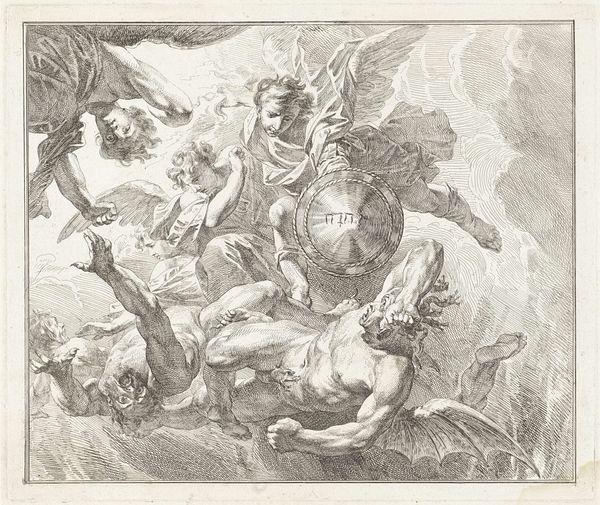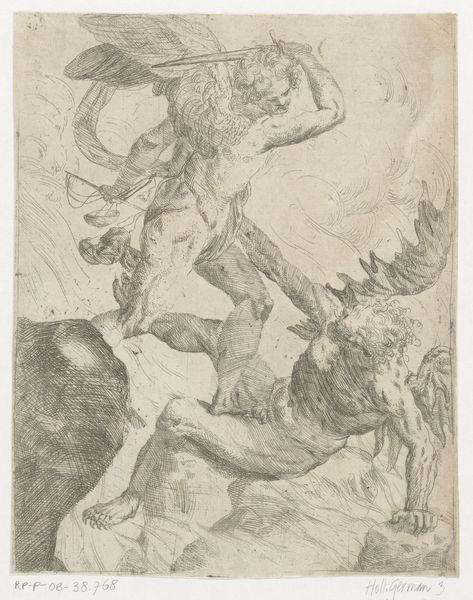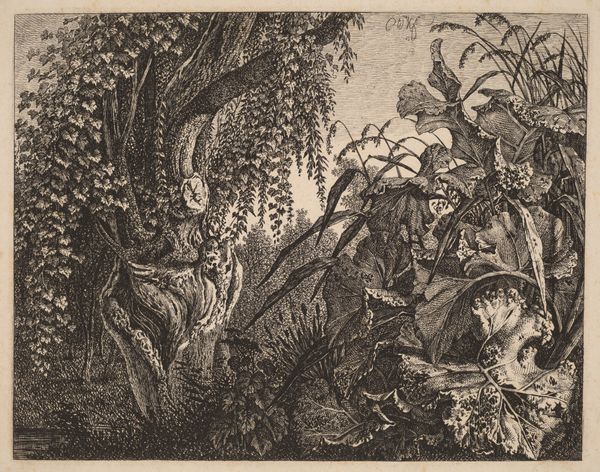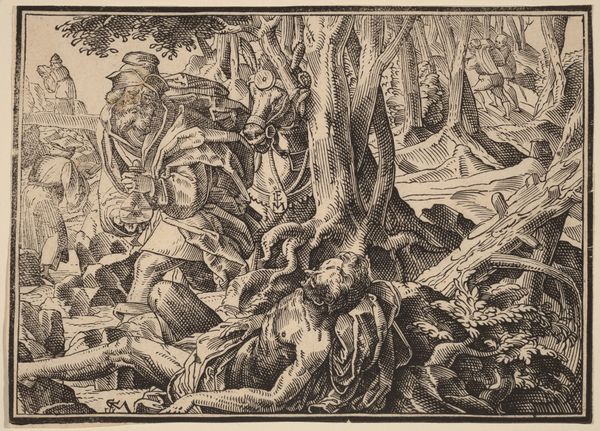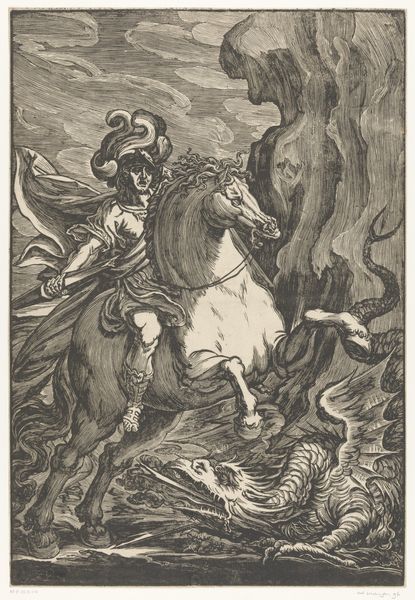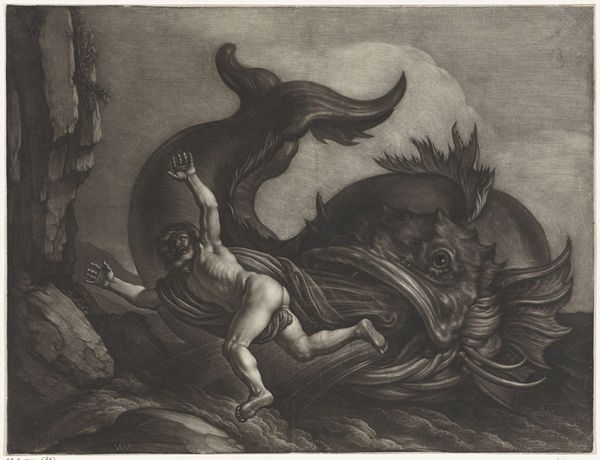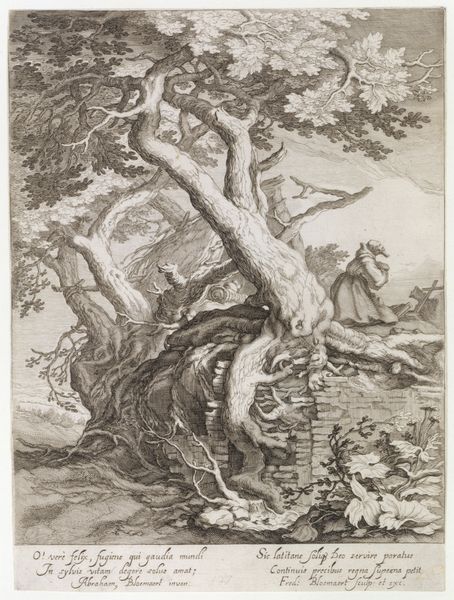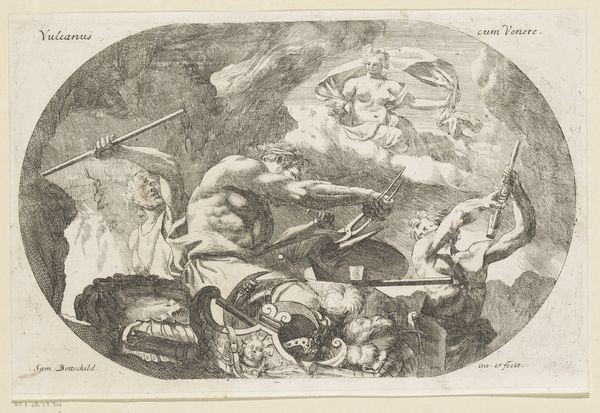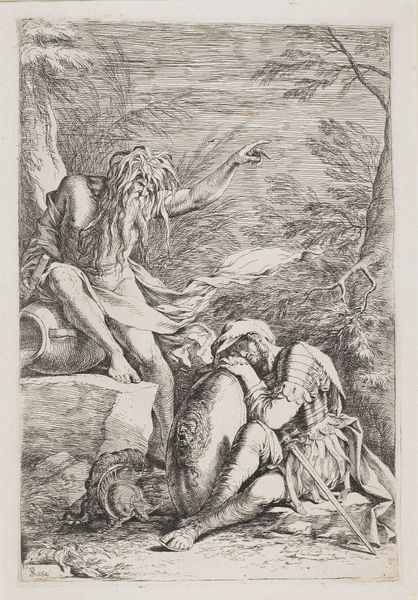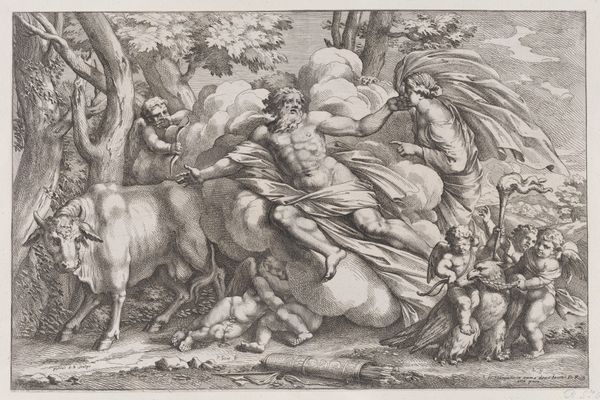
print, engraving
# print
#
landscape
#
figuration
#
romanticism
#
line
#
engraving
Dimensions: plate: 36.8 x 52.3 cm (14 1/2 x 20 9/16 in.) sheet: 37 x 52.5 cm (14 9/16 x 20 11/16 in.)
Copyright: National Gallery of Art: CC0 1.0
Curator: This is Carl Wilhelm Kolbe's engraving, "A Dead Oak Tree," created around 1830. What strikes you most about it? Editor: Its monumentality, surprisingly rendered in the fine lines of a print. You sense the immense weight of that gnarled oak, dominating the entire scene and landscape. There is also a social component here in the two human figures at the tree's base. What meaning would that pairing carry in this Romantic landscape? Curator: Kolbe masterfully employs the dead oak as a symbol of resilience. It stands stark against the softer trees in the background, a cultural monument that's seemingly immune to the relentless forces of time and decay, but it might suggest different notions around time for those human figures in relationship. It also raises the question of nature's sociality in light of ecological loss and species vulnerability in our contemporary moment. Editor: But how did Kolbe achieve such intricate detail? I'm fascinated by the process. Imagine the hours spent meticulously carving those fine lines into the printing plate to create the illusion of volume and texture! The level of labor embedded is incredible. What kind of workshop environment would be necessary for an engraver to flourish? Curator: Well, for Kolbe, it's clear the act of engraving was a contemplative process, a translation of direct experience in nature into a symbolic language accessible to a wider audience. Trees, particularly oaks, in the Romantic period signified endurance, history, the spirit of a people. It speaks to the continuity of cultural memory even as nature itself transforms. Editor: Indeed, the lines also construct an intense visual hierarchy, immediately focusing on this immense tree as a center of life. Though its foliage is dead, it supports its local ecology, standing as a vital resource that perhaps provided nuts for foraging people and animals. Did Kolbe have patronage that led to particular emphasis? Curator: It is less about the artist's patron as his audience; Kolbe sought to impart a moral message of perseverance through observation, not necessarily luxury. This artwork resonates due to its emotional depth. We see the weight of ages inscribed in every groove of the bark. Editor: Yes, the work beautifully entwines materiality with symbolic weight; an artistic choice bound to the technological and labor-intensive nature of printmaking itself. Curator: It is almost a kind of "memento mori", a tangible expression of temporality that invites us to reflect on our relationship with nature and history. Editor: An idea which also calls our attention to that vital connection with material itself. A lasting tribute forged in metal.
Comments
No comments
Be the first to comment and join the conversation on the ultimate creative platform.
